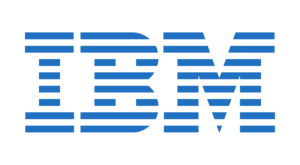

Lesson 1, the Caesar shift cipher and pattern detection
The simplest cipher, but a great introduction to both the implementation and cracking of a code.Powerpoint slides
Lesson 2, frequency analysis
Cracking substitution ciphers depends on finding hidden patterns in the text. Frequency analysis is your friend and is where the mathematics begins.Powerpoint slides
Lesson 3, the affine shift cipher
This is an introduction to modular arithmetic and builds on the first two lessons.Powerpoint slides
Lesson 4, breaking the affine shift cipher using modular inverses
A look at the mathematics behind the cipher, how to solve equations in modular arithmetic, and how that helps us break the affine shift cipher using inverses in modular arithmetic.Powerpoint slides
Lesson 5, the keyword cipher
Examines how to implement a much richer family of field ciphers based on an agreed keyword, and considers how to crack one in which the word structure is given, using cribs.Powerpoint slides
Lesson 6, cracking a keyword cipher using frequency analysis and cribs
This lesson takes what we know about frequency analysis and cribs and uses it to crack a much harder example of a keyword cipher in which the word structure is hidden.Powerpoint slides
A fabulous introduction to the world of codes and ciphers, featuring Simon Singh.

Harry designed the first Pringle Can rotor encryption machine in 2005 to help BOSS agents crack a version of the notorious Russian Fialka cipher. We might publish more information about that case in a further training exercise later. For now we refer you to Franklin-Heath who have published full details of how to build a working Enigma machine for use in the field. You will find the instructions at their website. It is no harder to make than a Caesar cipher wheel, though it is a lot harder to use. On the other hand it gives you pretty much the full power of the Enigma cipher for the cost of a tube of Pringles, which is also useful for field rations.

Want to learn to think like the BOSS codebreakers in Cheltenham. Try these devious puzzles by the GCHQ masterminds behind

Some of the leading agents who worked on the 2016 case wrote up how they tackled it. If you are wondering what it takes to become an elite cryptanalyst at BOSS read how these agents tackled a message encrypted with a brand new code. A lot of the challenges you will face as a BOSS agent will not be anything like as difficult, but as for the later ones …
Notes from our debrief of Agent Cribbage, one of the team who broke open our 2018 case. Cribbage explains his thinking as he tackled another brand new code.
A guide to solving Challenge 9B from the 2019 training module, written by Challenge archivist, Madness.

PROGRAMMING FOR CRYPTOLOGISTS, 101
Agent Julian Bhardwaj from our cryptanalyst section wrote a fantastic field guide to programming for beginners who want to take their skills to the next level.
Agent Thomas Campbell takes us through the steps he took to crack the Solitaire cipher from the Challenge in 2015, using Python: “It took me to places I hadn’t been before. I did things I wasn’t expecting to do …”

We work closely with a number of private organisations and government security agencies. If you are interested in a secondment with one of them, then take a look at their recruitment pages.








